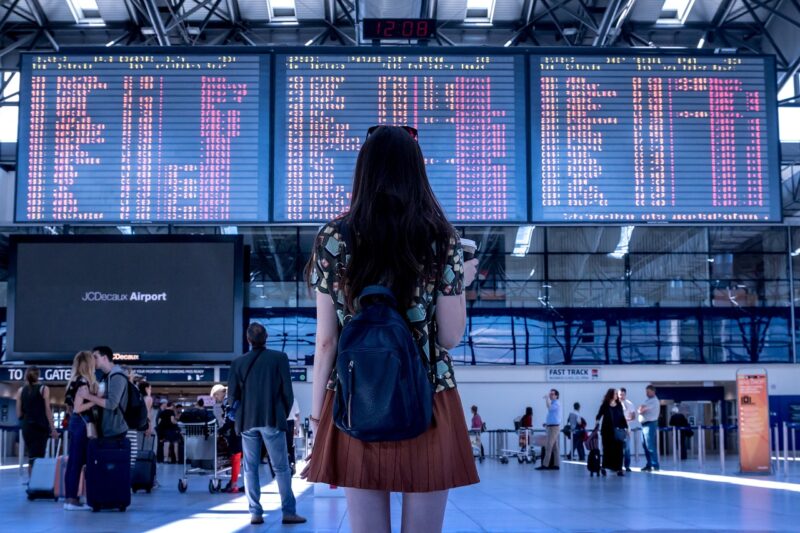The Role of Airport Wildlife Control Teams in Keeping Passengers Safe
November 11, 2024

Air travel has become a staple of modern life, connecting individuals and communities across the globe. However, with the increase in air traffic, a unique challenge has emerged: the presence of wildlife near airports. Birds, deer, and other animals pose serious threats not only to the safety of passengers but also to the aircraft itself. This is where airport wildlife control teams play a crucial role in ensuring passenger safety and maintaining smooth airport operations.
1. Understanding the Issue of Wildlife at Airports
Wildlife strikes can lead to catastrophic incidents in aviation history. Animals can collide with aircraft during takeoff, landing, or even on the taxiway. According to the Federal Aviation Administration (FAA), there were over 13,000 reported wildlife strikes in the United States in 2019 alone, which highlights the importance of addressing this problem.
The most common offenders include birds, especially large species like geese, which can cause significant damage when colliding with airplane engines. Additionally, mammals, such as deer and coyotes, can wander onto runways, creating hazards for pilots during critical flight phases.
2. The Role of Wildlife Control Teams
So, what exactly do wildlife control teams do? Typically consisting of trained professionals, these teams employ various strategies to manage and mitigate wildlife hazards at airports. Here are their primary functions:
- Monitoring Wildlife Activity: Teams regularly survey the airport environment to monitor wildlife populations. This involves observing animal behavior, identifying peak activity times, and understanding migratory patterns that may pose risks to flight operations.
- Habitat Management: Wildlife control teams actively manage habitats around airports to reduce animal attraction. This can include maintaining grass at specific heights, eliminating standing water, and using native landscaping that is less appealing to wildlife.
- Deterrence Techniques: Several non-lethal deterrence methods are employed to keep wildlife away from runways. These can include noise-making devices, reflective surfaces, and trained dogs that chase birds away. Additionally, teams might use visual deterrents such as kites or drones that mimic predators.
- Emergency Response: In the event of a wildlife strike or an urgent situation involving wildlife on the runway, control teams respond promptly to remove animals and mitigate risks. Quick action can prevent potentially disastrous consequences for departing or arriving flights.
3. Collaboration with Regulators and Aviation Authorities
Wildlife control teams work in conjunction with aviation regulators, including the FAA and international organizations, to implement and adhere to effective wildlife management plans (WMPs). These plans outline the operational protocols necessary to minimize wildlife hazards while protecting the environment.
Moreover, airports often undergo assessments to update their wildlife management strategies. This collaboration ensures a systematic approach to addressing wildlife threats, backed by scientific research and data-driven methodologies.
4. Technological Advancements in Wildlife Control
As technology evolves, wildlife control teams adopt new tools and techniques to improve their effectiveness. Some notable advancements include:
- Drones: Unmanned aerial vehicles (drones) equipped with cameras help monitor unauthorized wildlife activity in real-time, allowing control teams to respond swiftly to threats without needing personnel on the ground.
- AI Monitoring Systems: Artificial Intelligence can analyze and predict wildlife movement patterns, enabling teams to activate deterrence measures proactively. This minimizes wildlife presence during critical operations, such as take-offs and landings.
- Remote Sensing: Advanced radar and sonar systems detect the presence of wildlife at varying distances, alerting control teams to potential risks before animals make it onto the runway.
These technological innovations enhance the effectiveness of wildlife management practices, thereby safeguarding passengers and crew members.
5. Raising Awareness and Community Engagement
Effective wildlife control requires not just team efforts but also community involvement. Public awareness campaigns educate airport staff and local communities about the importance of minimizing wildlife hazards and promoting preventive measures. This can include:
- Outreach Programs: Educational workshops and seminars for airport employees and local residents on the impact of wildlife in airport areas, as well as proper reporting protocols when wildlife is spotted nearby.
- Collaboration with Local Wildlife Agencies: Partnerships with local wildlife management agencies help ensure a holistic approach to wildlife control, addressing environmental and ecological aspects while prioritizing passenger safety.
- Engagement Programs: Involving local schools and community groups in wildlife conservation projects can promote a sense of responsibility and stewardship toward both local wildlife and airport operations.
Involving the community can help mitigate human-wildlife conflict around airports, leading to a safer environment for travelers.
Conclusion
In summary, wildlife control teams are an unsung yet critical component of airport safety management. Through proactive monitoring, effective habitat management, and the adoption of advanced technologies, they play a vital role in protecting passengers and crew from the hazards posed by wildlife. As air travel continues to evolve, collaboration between various stakeholders, including regulatory agencies, technology providers, and local communities, will be essential in addressing this ongoing challenge effectively.
As we navigate an increasingly connected world, it’s important to acknowledge the efforts of airport wildlife control teams that keep our skies safe and ensure the continued smooth operation of air travel.






